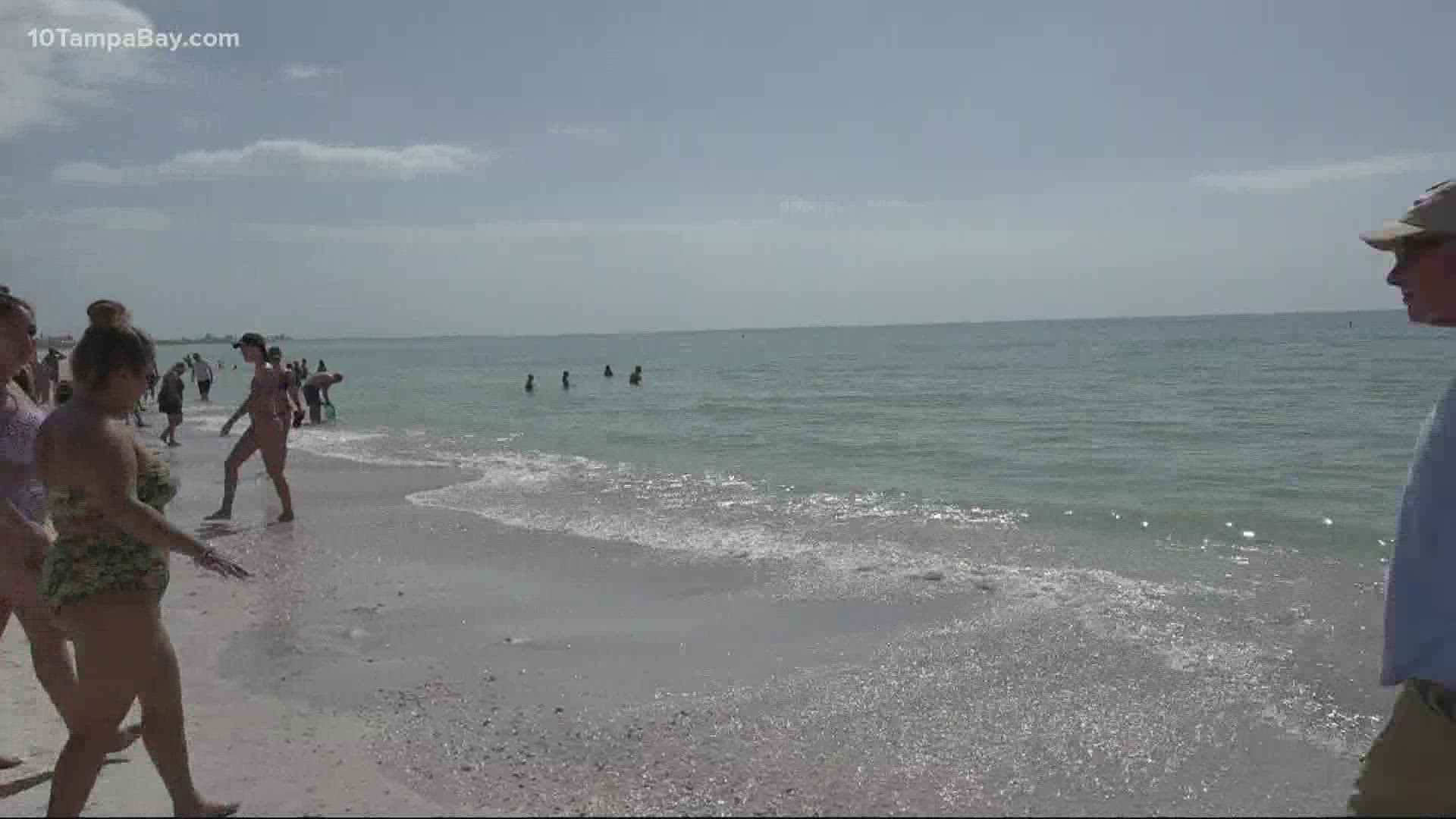ST. PETE BEACH, Fla. — Summer in Florida means sunshine, humidity, and — especially recently, dealing with red tide. When blooms are bad, this means avoiding certain beaches and checking levels and wind directions before hitting the beach.
But what is "bad" for red tide?
Now, researchers can give you a definitive answer. Up until recently, there has been no standardized way to measure individual blooms and their impacts.
Scientists looked at red tide samples along Florida's Gulf Coast. Cell counts from Karenia brevis, a harmful algal bloom species that causes red tide, were taken to create a bloom severity index and a respiratory irritation index.
Dr. Rick Stumpf is an oceanographer with the National Oceanic and Atmospheric Administration. He helped develop an index for measuring red tide. He explained the severity will be measured on a scale of 1-10, 10 being the worst red tide conditions the state has seen.
"[We took] the measurement of the concentration of cells, Karenia brevis, that's the microorganism that makes red tide," Stumpf said. "We take the concentration in the water. We looked at it in what we call bins in the water along the coast. We took data every 20 miles along the coast and looked at it by month. When we are calculating severity, it's how much of the coast is affected and how many months were affected when you tally all this up. That also means we can look at the frequency of blooms in different areas."
In a release from the Gulf Coast of Mexico Coastal Ocean Observing System, these two indexes create "a standardized and objective way to gauge how severe red tides are, which should help decision makers better evaluate the risks of red tides as blooms occur and respond in ways that lessen bloom impacts on public health and local economies."
These new tools will not only allow experts to share more information on existing blooms but also create bloom forecasts.
In addition to an index to help track the severity of red tide, researchers also created a tool to track respiratory forecasts. This allows users to get real-time data of red tide impacts along our gulf coast beaches.
"It's possible for people to know if they can go to the beach this morning, tomorrow, or which beach we can go to," Stumpf said.
Stumpf said he hopes these new tools will not only help people stay safe and healthy by streamlining data but also help beach businesses better plan for red tide season.
"We often get the impression that red tide is everywhere all the time," Stumpf said. "That is really bad for people that work on the beach, for businesses on the beach. And the other part is, for people that don't know what's going on, they may go to the beach and get sick. Trying to keep people healthy and keep the people and businesses that work there financially healthy."

